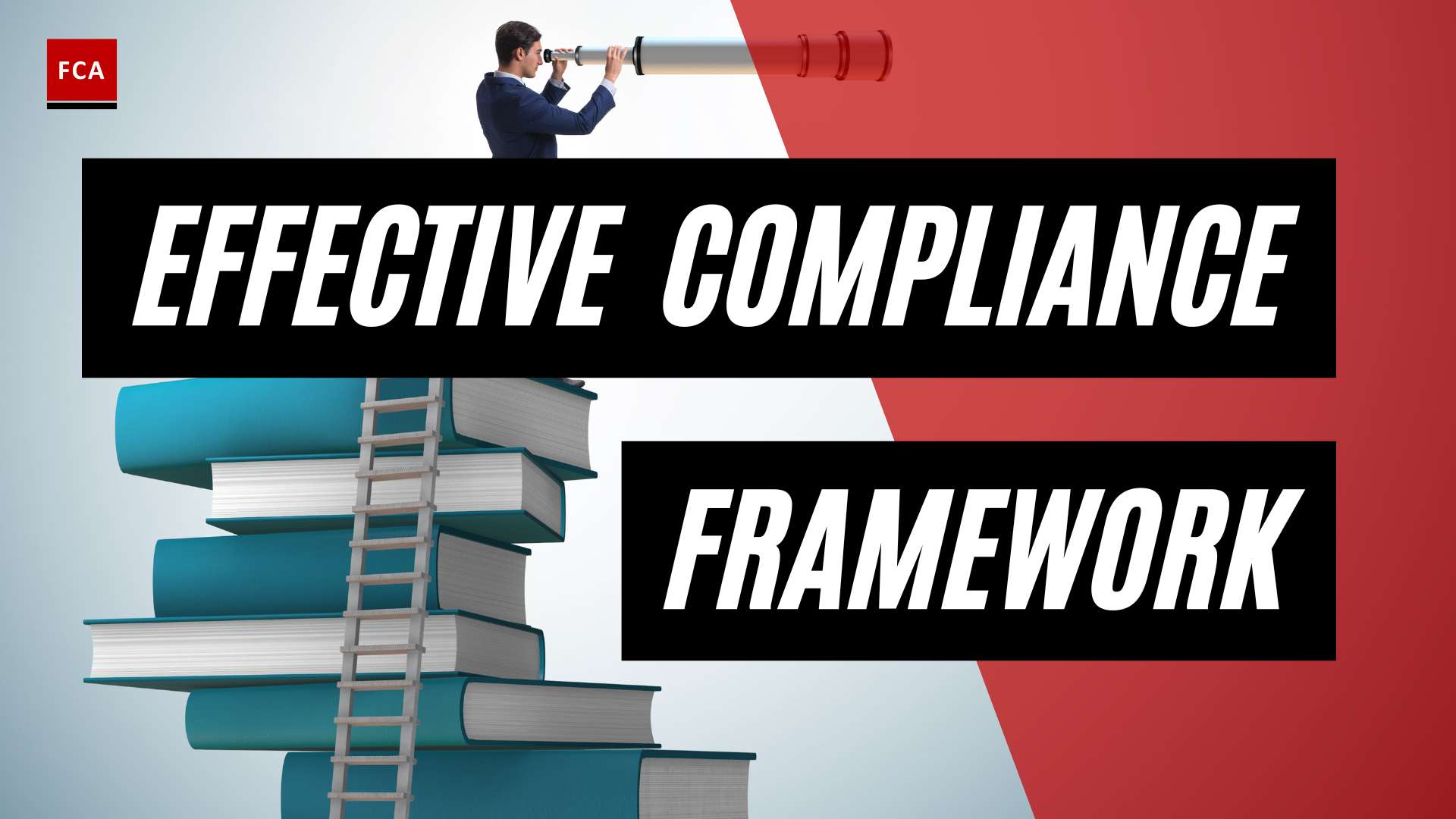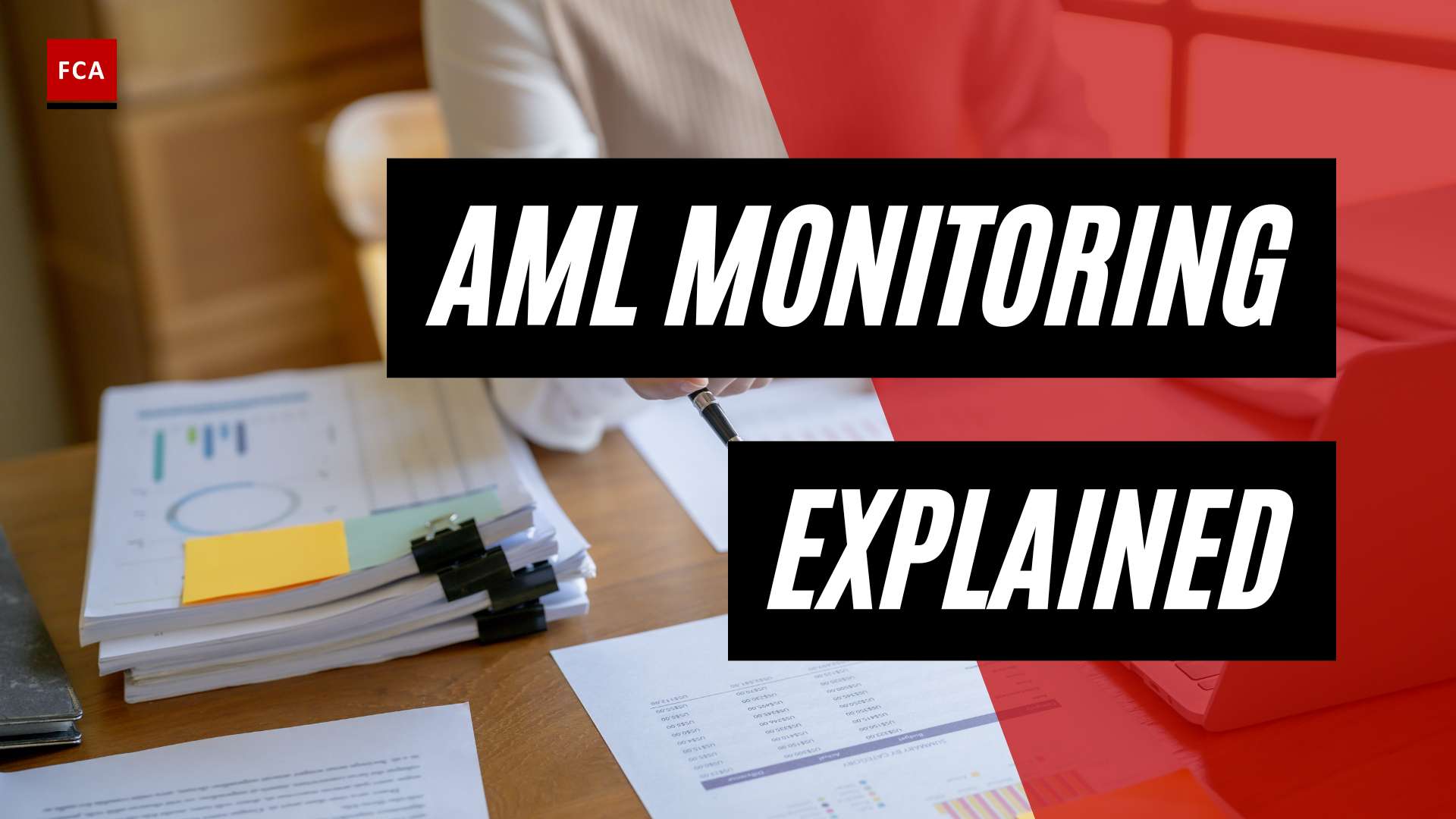AML Compliance Training: An Overview
When it comes to combating financial crimes such as money laundering and terrorist financing, AML (Anti-Money Laundering) compliance training plays a vital role. Financial institutions around the world are required to develop and implement AML compliance programs to meet regulatory requirements and safeguard the integrity of the financial system. The Bank Secrecy Act (BSA) in the United States and the EU’s Anti-Money Laundering Directives are just a few examples of the importance placed on AML programs.
Importance of AML Compliance Training
The importance of AML compliance training cannot be overstated. A well-implemented AML compliance program ensures that financial institutions can detect and report suspicious activities related to money laundering, tax evasion, fraud, and terrorist financing to the appropriate authorities. By focusing on the effectiveness of internal money laundering detection systems, controls, and evaluating the risk posed by customers and clients, financial institutions can safeguard themselves and the financial system as a whole (Flagright).
AML compliance training also plays a crucial role in creating a strong culture of compliance within financial institutions. It ensures that employees have a working knowledge of the AML process and understand their responsibilities within the program. By regularly training employees and keeping them informed about regulatory requirements and best practices, financial institutions can mitigate the risks associated with money laundering and terrorist financing (Flagright).
Applicability of AML Training Requirements
Money laundering regulations apply to various business sectors, including financial services, accountants, estate agents, and law firms undertaking regulated work as per the Money Laundering Regulations 2017 (VinciWorks). Relevant businesses must be supervised and register with HMRC if they are not already governed by a professional body like the Law Society to comply with the Money Laundering Regulations 2017.
AML compliance training should be conducted by all employees of financial institutions, regardless of their roles and responsibilities. However, specific employees with AML-specific responsibilities should receive additional targeted training to ensure a strong culture of compliance throughout the organization. Customization of training programs based on individual roles and responsibilities ensures that employees receive relevant and practical guidance on identifying and addressing potential money laundering risks in their areas of operation (Financial Crime Academy).
To meet the regulatory requirements and ensure the effectiveness of AML compliance training, financial institutions must maintain appropriate documentation and records of their training activities. This documentation not only demonstrates compliance but also serves as a valuable resource for audits and inspections.
Inadequate AML compliance training can have serious consequences for financial institutions. Apart from facing fines and potential prosecution, institutions may suffer reputational damage, loss of clients, and compromise the security of the financial system. It is imperative to invest in effective AML compliance training to protect the institution, its stakeholders, and the integrity of the financial system as a whole (Financial Crime Academy, Flagright).
Key Components of AML Compliance Training
To effectively combat financial crimes such as money laundering and terrorist financing, it is crucial for financial institutions to have robust Anti-Money Laundering (AML) compliance programs in place. These programs consist of various key components that contribute to the overall effectiveness of AML training programs. Let’s explore these components in detail:
Detecting Suspicious Activities
A fundamental aspect of AML compliance training is educating employees on how to identify and detect suspicious activities related to money laundering, tax evasion, fraud, and terrorist financing. By providing employees with the necessary knowledge and tools, financial institutions can empower them to recognize and report potential red flags. Training should cover the indicators of suspicious transactions, customer behavior patterns, and unusual transactional activity that may warrant further investigation.
Comprehensive Policies and Procedures
Comprehensive and well-documented policies and procedures are essential elements of an effective AML compliance program. These policies should outline the institution’s commitment to AML compliance and provide clear guidelines for employees to follow. AML training should encompass a thorough understanding of these policies, including customer due diligence (CDD) requirements, transaction monitoring protocols, and reporting obligations. Regular training updates should be conducted to ensure that employees are aware of any changes or updates to the policies.
Conducting Risk Assessments
Risk assessment plays a vital role in AML compliance training. Employees should be trained on how to conduct risk assessments to evaluate the level of risk associated with customers, products, services, and geographic locations. This training should focus on identifying high-risk factors, understanding risk rating methodologies, and implementing appropriate risk mitigation measures. By equipping employees with risk assessment skills, financial institutions can enhance their ability to identify and manage potential money laundering risks effectively.
Implementing Know Your Customer (KYC) Programs
Know Your Customer (KYC) programs are essential for verifying the identity of customers and assessing their potential risk for money laundering. AML compliance training should provide employees with a comprehensive understanding of KYC requirements, including customer identification procedures, beneficial ownership identification, and ongoing monitoring of customer relationships. Training should emphasize the importance of following KYC procedures diligently to mitigate the risk of inadvertently facilitating money laundering activities.
Independent Audits and Monitoring
Regular independent audits and monitoring are crucial for evaluating the effectiveness of an institution’s AML compliance program. Employees should be trained on the purpose and process of these audits, including the importance of cooperation and transparency during audits. Training should also emphasize the significance of ongoing monitoring of transactions, internal controls, and reporting mechanisms to identify and address any potential weaknesses or gaps in the AML compliance program.
By incorporating these key components into AML compliance training, financial institutions can enhance their ability to detect, prevent, and report suspicious activities. Training should be tailored to the specific roles and responsibilities of employees, ensuring that they have the knowledge and skills necessary to fulfill their AML compliance obligations. Continuous training updates and reinforcement of AML principles contribute to a strong culture of compliance within the organization, ultimately safeguarding the integrity of the financial system.
Best Practices for Effective AML Training
To ensure the effectiveness of AML compliance training, organizations should implement best practices that cater to the unique needs of their employees and the evolving landscape of financial crime. Here are some key strategies for delivering impactful AML training:
Real-Life Case Studies and Scenarios
One of the most effective ways to engage employees and enhance their understanding of money laundering and terrorist financing is through the use of real-life case studies and scenarios. By analyzing actual examples, employees can grasp the intricacies of these illicit activities and recognize their manifestations in their everyday work. This approach helps bridge the gap between theory and practice, enabling employees to apply their knowledge in real-world situations. Interactive discussions and assessments can further reinforce learning outcomes and enhance retention.
Tailoring Training to Specific Roles
Not all employees within an organization have the same level of exposure to AML risks. Tailoring training programs to specific roles and responsibilities ensures that employees receive targeted and relevant information. For example, frontline staff who interact directly with customers may require training on customer due diligence and transaction monitoring, while senior management may need a deeper understanding of AML policies and regulatory requirements. By customizing training content, organizations can maximize the impact of their AML training efforts and address the unique needs of different departments and job functions.
Ongoing Training and Refresher Courses
AML compliance training should not be a one-time event but a continuous process. The financial crime landscape is constantly evolving, with new trends, typologies, and regulatory changes emerging regularly. To stay ahead, organizations should provide ongoing training and refresher courses to keep employees up-to-date and well-informed. Regular training updates help employees maintain a proactive stance against money laundering and terrorist financing activities. By reinforcing the importance of vigilance and providing continuous education, organizations can foster a culture of compliance throughout their workforce.
Utilizing Online Platforms and E-Learning Modules
In today’s digital era, online platforms and e-learning modules have become valuable tools for delivering AML training. These platforms offer flexibility and scalability, allowing organizations to reach a wider audience within their financial institution. Online training accommodates varying schedules and learning styles, enabling employees to access training materials at their convenience. Additionally, digital training tools ensure consistent and standardized delivery of AML training content, making it easier for organizations to track and monitor employee progress. By utilizing online platforms and e-learning modules, organizations can enhance the efficiency and effectiveness of their AML training programs.
By incorporating these best practices into their AML training strategies, organizations can equip their employees with the knowledge and skills necessary to detect and prevent money laundering and terrorist financing activities. As a result, they can strengthen their overall AML compliance program, mitigate risks, and contribute to the integrity of the financial system.
Requirements for AML Compliance Training
To effectively combat money laundering and terrorist financing, AML compliance training is essential. Financial institutions and businesses in various sectors must adhere to regulatory requirements and implement robust training programs. Here are the key requirements for AML compliance training:
Regulatory Requirements
Money laundering regulations apply to various sectors, including financial services, accountants, estate agents, and law firms undertaking regulated work as per the Money Laundering Regulations 2017 (VinciWorks). Relevant businesses must register with HMRC if they are not already governed by a professional body like the Law Society to ensure compliance with these regulations (VinciWorks). Compliance programs are mandated by legislation such as the Bank Secrecy Act (BSA) in the United States and the EU’s Anti-Money Laundering Directives (Flagright).
Documentation and Record-Keeping
AML compliance training programs should include comprehensive documentation and record-keeping. Policies, procedures, and training materials should be documented and made available to authorized individuals, including employees, agents, and others who deal with clients and transactions. Keeping records of training dates, attendees, materials used, and test results helps demonstrate the effectiveness of the AML training program to regulators (IIROC).
Tailoring Training to Individual Roles
An effective AML compliance program recognizes that different employees have varying responsibilities and levels of exposure to money laundering risks. Training materials should be tailored to specific roles within the organization, ensuring that employees gain a comprehensive understanding of AML requirements relevant to their job functions. This targeted approach helps employees apply AML knowledge effectively in their day-to-day tasks.
By adhering to regulatory requirements, maintaining accurate documentation, and tailoring training to individual roles, organizations can establish robust AML compliance training programs. These programs are crucial for equipping employees with the knowledge and skills necessary to detect and prevent money laundering and terrorist financing activities. Additionally, they demonstrate a commitment to upholding the integrity of the financial system and protecting businesses from reputational damage and legal consequences.
Available Resources for AML Compliance Training
To effectively meet the training needs of professionals in the field of anti-money laundering (AML) compliance, several reputable resources and programs are available. These resources offer comprehensive training courses, certifications, and tools to enhance knowledge and ensure compliance with AML regulations. Let’s explore some of these resources:
LIMRA AML Program
The LIMRA AML Program has been widely used in the industry since 2003. It offers AML courses in English and Spanish, providing a solid foundation in AML compliance. The program includes a refresher course created annually to reinforce the recognition and prevention of money laundering. The 2024 refresher course focuses on topics such as compromised identities, customer protection controls, red flags for money laundering, and the use of Suspicious Activity Reports (SAR).
The LIMRA AML Program allows producers to complete core training just once, after which documentation is sent to every participating carrier they represent, meeting key U.S. Treasury Department rules requirements. The program also offers an AML Resource Library for learners to review content as needed, and a customizable company page to help carriers fulfill regulatory requirements. Additionally, LIMRA provides downloadable resources such as posters and digital ads to keep AML top of mind.
FINRA Gateway and FinPro
The Financial Industry Regulatory Authority (FINRA) offers two valuable resources for AML compliance training: FINRA Gateway and FinPro.
The FINRA Gateway is a resource for member firms, providing firm compliance professionals with access to filings and requests related to AML compliance training. It enables professionals to run reports, submit support tickets, and manage compliance tasks efficiently.
FinPro, on the other hand, is a platform designed for registered representatives to fulfill Continuing Education requirements, view their industry Central Registration Depository (CRD) record, and perform other compliance tasks relevant to AML training. These resources offered by FINRA assist professionals in staying up to date with AML compliance requirements.
FCA Training and Certifications
The Financial Crime Academy (FCA) provides comprehensive AML compliance training through webinars and online resources. FCA offers a wide range of training topics, including anti-money laundering laws and regulations, sanctions compliance, fraud prevention, and cybersecurity implications.
Professionals completing AML compliance training with FCA may pursue certifications such as the Certified Anti-Money Laundering Professional (CAMP) credential, which demonstrates expertise in the field.
Consequences of Inadequate AML Training
Insufficient AML training can have severe repercussions for individuals and organizations operating in regulated industries. By neglecting to prioritize robust anti-money laundering (AML) training, the following consequences may arise:
Fines and Prosecution
Regulatory authorities are vigilant about enforcing AML compliance and ensuring that organizations adhere to the necessary training requirements. Failure to provide adequate AML training can result in substantial fines and penalties. For instance, a firm was recently fined £20,000 by the Solicitors Regulation Authority for lacking AML training and systems (LinkedIn). These financial penalties aim to discourage non-compliance and emphasize the importance of maintaining a strong AML training program.
Damage to Reputation and Loss of Clients
Inadequate AML training can harm an organization’s reputation and erode client trust. Failure to prevent money laundering incidents due to a lack of training can result in negative publicity, which can be detrimental to a company’s standing in the market. Clients may lose confidence in an organization’s ability to safeguard their interests, leading to a loss of business and potential revenue. Protecting the reputation and trust of clients is paramount, making proper AML training an essential investment.
Ensuring Security of the Financial System
AML training plays a critical role in upholding the security and integrity of the global financial system. By educating individuals and organizations about the risks and concepts involved in money laundering, AML training helps prevent illicit activities from infiltrating the financial system. Neglecting to provide adequate training leaves the financial system vulnerable to exploitation, potentially enabling the facilitation of money laundering schemes (LinkedIn).
It is essential for organizations to recognize the significance of comprehensive AML training in minimizing the risks associated with money laundering. By implementing effective training programs, organizations can mitigate the potential consequences of inadequate AML training, safeguard their reputation, and contribute to the overall security of the financial system. To explore available resources for AML compliance training, refer to our article on AML training programs.








